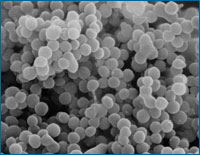Carl had always been interested in biology but got hooked on evolution after encountering Darwin’s basic idea of natural selection. The concept is simple, but incredibly powerful. Individuals in populations vary slightly from one another. Some of those variations help the individuals that possess them to produce more offspring than others. Those offspring, in turn, inherit the successful variations and produce more offspring themselves. As generations pass, the population evolves towards the variation that is the more successful. As new helpful variations arise, they are also selected for and are layered on top of or replace previously successful variations.
Natural selection is simply the logical result of four features of living systems:
- variation – individuals in a population vary from one another
- inheritance – parents pass on their traits to their offspring genetically
- selection – some variants reproduce more than others
- time – successful variations accumulate over many generations
The simplicity and power of natural selection and other mechanisms of evolution struck Carl as ideas that he could spend a career studying. And he has, thus far, managed to do just that.

Natural selection can operate in any population, but Carl focuses much of his work on bacterial populations that impact public health. He admits that this choice was motivated by a desire “to do something useful — and one gets tired, on the airplane or around the dinner table, of not being able to explain what you do without people saying, ‘But what is the point of working on that? Why does it matter?'” And learning to control the evolution of harmful bacteria in hospitals is clearly a project that matters.
After working with Bruce Levin at Emory University observing and experimenting with the evolution of bacteria in a laboratory setting, Carl was ready to take these same ideas and apply them to a real world problem — but with a slight twist. Instead of devising experiments and carrying them out directly, Carl builds computer models of bacterial populations and investigates them virtually. The predictions and conclusions that he gains from these models can then be compared to real world observations and tested in clinical settings by other researchers.
Read all about it! Learn more about how natural selection works.
Get tips for using research profiles, like this one, with your students.

